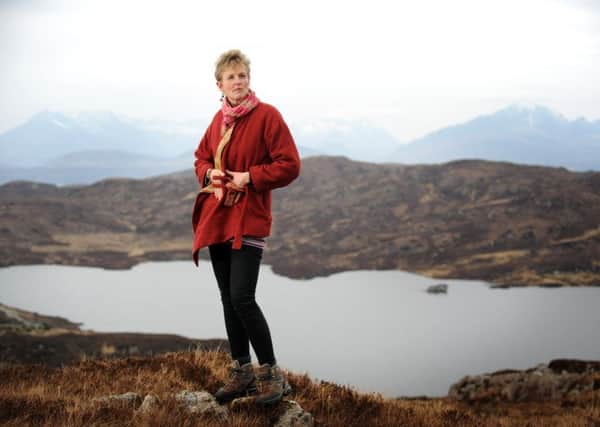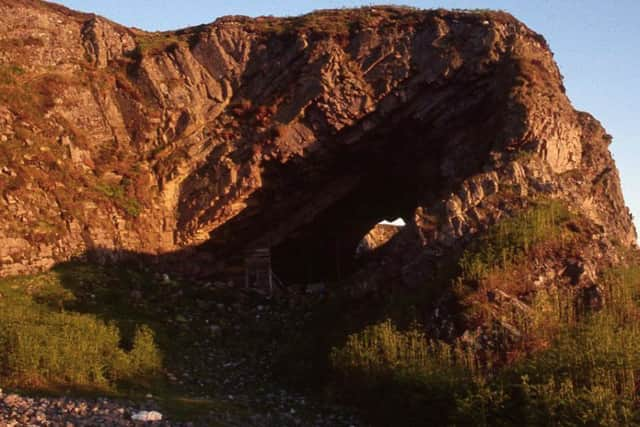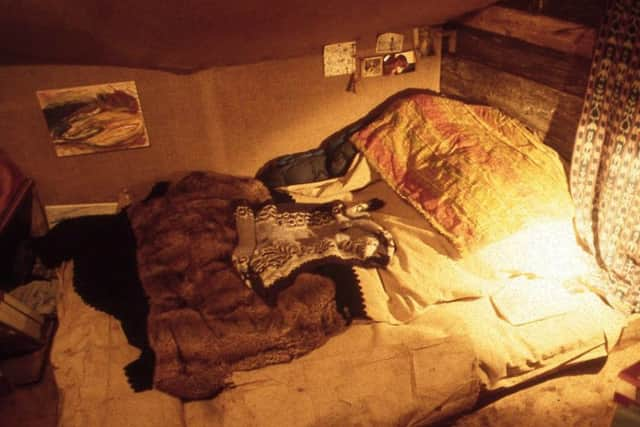Why I lived alone on a Hebridean beach for two years


Ms Brook was to spend three separate periods living in the arch, twice staying for six months and then a whole year, including the winter.
As an artist, she wanted to experience solitude and find a place she could work without any outside pressures or interruption.
Advertisement
Hide AdAdvertisement
Hide AdAfter researching Jura’s coastline for a year, she “boldly” cut ties with her London gallery, collected together enough equipment - tools, art supplies, food and warm clothes - and headed north.


Not many boats head onto this stretch of coastline given its hidden, jutting rocks and dangerous landing points.
But after finding a clam fisherman from Islay willing to try the journey, Ms Brook arrived on Jura and got to work on the arduous task of moving her stuff across a mile of rocky beach to her new residence.
“I absolutely loved living there and the timing was right for me,” said Ms Brooks. “That doesn’t mean there weren’t hard weeks,” she added.
With her new home around 200 metres from the shoreline, Ms Brook was quickly thrown to the mercy of the Hebridean elements.


Her first major job was to build a wind baffle from driftwood to help protect her from the Atlantic storms.
“There were some incredibly windy nights, some formidable gales. I think the wind can be very challenging and it became very hard when it was very strong, particularly when it lasted a few days and it was difficult to work,” she said.
Advertisement
Hide AdAdvertisement
Hide AdA radio, charged by a wind-powered generator, became an essential companion with time spent listening to classical music concerts or listening to casettes complied by friends. Big books, including War and Peace and Moby Dick, were read. The sea was swam in every day. A local cat kept mice and rats at bay.
She said; “I loved being outside all the time and knew it was having a huge and good influence on me and the work.


“Sometimes I became aware of not seeing anyone for a while but I was working hard and focussed on that rhythm.
“So I wasn’t lonely. Occasionally wild animals did give me a fright at night with a noise.”
With no way of communicating with the outside world, Ms Brook would wave down a passing fisherman in time of need.
“They were fairly regular passing by. And one time they dropped me off a bag of nails when I had run out,” she added.


Over time, they would stop to say hello and share a bowl of porridge in the morning. A number of “fantastic visits” from her partner and the occasional family member punctuated her solitude.
Advertisement
Hide AdAdvertisement
Hide AdMs Brook, who now lives on Skye with her partner and four children, chose not to fish or hunt while on Jura in order to free up time for painting and sculpture. She brought all her food with her by boat at the start of each trip with her meals cooked on driftwood fires under the arch.
Nuts and dried fruits were mainstays of her diet. Potatoes, onions and carrots were dropped in to hot stews at night. Chorizo lasted forever and gave flavour. Truckles of cheddar with oatcakes or rye bread were a true treat. In the spring, green vegetables were grown. Powdered milk was added to endless cups of tea.
A Nepalese had with earflaps was worn both while awake and asleep. Waterproof trousers were essential and a hot water bottle a natural ally. Floris soap from her mum was her luxury.
At first, Ms Brook put up a triangular tent under the arch and slept on a mat. Later, a cloth house, which separated her living and working areas, was made.
“When you are on your own you have to be very resourceful and resilient,” she added.
Ms Brook, 55, who lived on Jura during the mid 1990s, used the Jura Distillery as a postal address and would occasionally venture out on foot to collect mail. Later, she held an exhibition at the distillery and completed an art project with local school children.
The artist said she “learnt many things” while living on Jura with new skills being devised.
Advertisement
Hide AdAdvertisement
Hide Ad“Once I had to move a huge rock from the place where I could build the cloth house - I dug a channel underneath it and lit a fire and the heat broke up the rock so I could then move it.
“I had to use my common sense and intuition for building/making all the time which I enjoyed very much.
“And one has to be inventive when improvising with limited means.
“I think solitude is a vital part of life that we should all have at times. It is like a honing stone, sharpening the senses and enabling us to have a deeper connection with our environment and work. It enables us to be more self contained and resourceful.”
Ms Brooks said it also made you “more appreciative” of companionship when it is there.
After leaving Jura, Ms Brooks spent many years on the island of Mingulay, south of Barra, which was evacuated in 1912 as the community was unable to sustain herself.
Ms Brooks lived there on and off for 15 years, living with no running water in the old schoolhouse, the sound of the crashing waves her only constant companion.